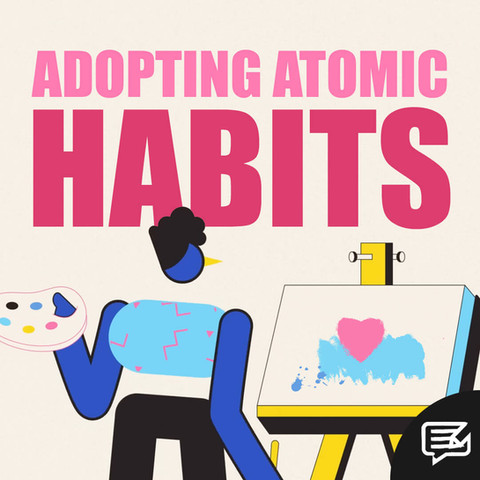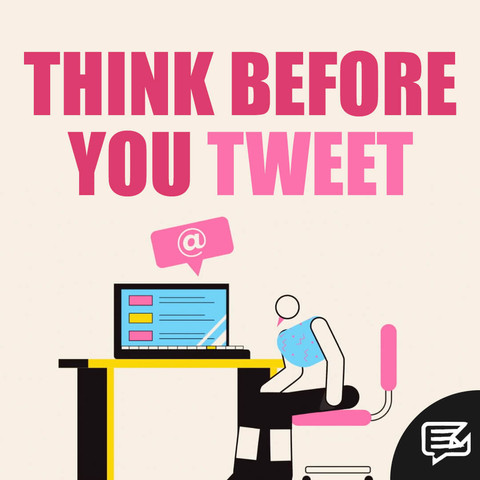
31.05.22
ARE NEW TECH HABITS HERE TO STAY?
Do you struggle to remember what life was like pre-pandemic? You’re not alone. Nobody could have anticipated the speed of widespread digital transformation lived through from 2020 onwards, thanks to recurring lockdowns.
Banana bread and DIY videos were the tip of the iceberg; the gaming, entertainment, and e-commerce sectors witnessed accelerated growth, in a way previously inconceivable. QR codes became de rigueur. Cash has all but disappeared. TikTok exploded.
The question is: are the tech habits we adopted going to remain a feature of our lives in the long-term?



As noted in a BBC article:
“The pandemic has ushered in a new era for tech, from Zooms and pings to e-scooters and online shopping. Back in April 2020, Microsoft's Brad Smith said two years of digital transformation had taken place in just two months.”
Ben Wood, chief analyst at CCS insight, thinks the so-called ‘Zoom boom’ - the era of video calls - is here to stay:
"For many people, the shift to video communications is now permanent," he says.
"What would have been a phone call is now likely to be a video call and I expect to see this form of communication being used far more widely when people are out and about, not just stuck at home or in a fixed location."
Wood thinks a combination of physical and digital meetings will become the new normal. This seems to tally with the continued popularity of working from home initiatives.
If Sartre was correct and ‘hell is other people’, the numbers who desire a return to the office seems to reflect it. A report by Accenture in 2020 about COVID-19 habits found:
“The once mandatory working from home has been embraced by many and continues to be popular - 86% of consumers plan to continue or increase working at home - despite many offices reopening.”
Of course, home working is just one part of the picture. For those who don’t, or can’t, work from home, the pandemic still ushered in a range of widely adopted digital trends. In particular, these new trends were felt in e-commerce and entertainment. Did you try to sign up to Ocado at the beginning of the pandemic to replenish your toilet paper stocks? You weren’t alone.
Again, via Accenture:
“The dramatic rise in the adoption of e-commerce and omnichannel services, which has been evident since the start of our research, sees no sign of abating. The latest data suggests there will be a huge increase of 169% in e-commerce purchases from new or low frequency users, post-outbreak. And the vast majority of consumers who have increased their use of digital and omnichannel services, such as home delivery, curb-side pickup or shopping via social media platforms expect to sustain these activities into the future.”
We may have long passed the Hunger Games stage of the pandemic, but the convenience and choice offered by home shopping won many people over. A report by Swiss RE from December 2020 noted:
“Companies have invested in logistics and supply chains and widened their product ranges. This has attracted large numbers of consumers, and a survey earlier this year found many of them were likely to continue to buy online for non-health reasons such as convenience, time savings and wider product ranges.”
Such drastic change seems to have been the catalyst needed to change habits for good. Perhaps there was an element of peer approval at play too? You didn’t feel embarrassed about the neighbours seeing you ordering groceries online, because everyone else was as well?
A report by Deloitte that looked at the retail habits generated by the pandemic observed:
“Lockdown obliged consumers to change their shopping behaviour: 38 per cent of respondents did more shopping online relative to pre-lockdown levels. Half of these converts to online shopping would maintain these behaviours post-lockdown.
“During lockdown some customers experienced online food shopping for the first time. The unfamiliar first step was taken and for some there will be no going back. Online grocery retailers such as Ocado believe that things will never revert to how they were before the pandemic and are investing in scaling their e-commerce capacity.”
More time spent at home also meant a home entertainment surge. A report into lockdown tech behavior by McKinsey reported:
“In five months, Disney+ built a subscription base that had taken Netflix seven years to achieve. Remote working, learning, and shopping likewise have surged. Reliance on digital was growing before the pandemic began, and a meaningful amount of this online penetration is expected to persist after the pandemic is over.”
Netflix’s recent announcement of redundancies might signal that we’ve already reached peak subscription territory. The company is losing subscribers for the first time in ten years. Now things are reopening, in-person events are back on, and we no longer depend on the newest release to have something to look forward to over the weekend or get us through the long winter nights, it could be seen as inevitable that numbers are falling off. Having spent so much time staring at screens, for both work and entertainment, it’s no wonder the pendulum is swinging back in the other direction.
I definitely experienced screen time overload. Unsurprising then, that some people embraced more hands-on hobbies. Not only was the time spent commuting returned to be spent as we liked, these hobbies offered a welcome diversion from being chained to a home office desk.
It may be bad news if you’re sick of suffering your housemate’s banana bread or sourdough. Accenture’s analysis of our lockdown habits says that these ones are here to stay:
“The initial rise in home cooking and baking, as well as home improvement and DIY activities, which was evident in our earlier research, are remaining popular pastimes for consumers.”
Another area where norms changed, perhaps for the better, was the virtual doctor appointment setup. Although having to phone your local surgery to make a telephone appointment time with a GP might be a faff, it saves time and catching something in the doctor surgery waiting room… a hazard of the previous system. Deloitte’s report on lockdown habits notes:
“Consequently, online primary care providers reported that the number of virtual consultations conducted during lockdown increased exponentially. For example, eConsult, an online consultation platform providing patients with access to their own GPs, conducted an average 10,000 remote consultations a month pre-lockdown. By the end of April volumes had risen to over 30,000 a day, about 90 times higher.”
Some overall research statistics contained in the report give a snapshot of trends across several areas:
“The research revealed that:
About 40 per cent of respondents did more online shopping during lockdown.
14 per cent had more remote (phone or video) appointments with health practitioners;
A third streamed more films and/or TV series on SVOD platforms during lockdown.
What is not clear is the extent of the change that will prove to be enduring.”
If you want to build a long-standing habit, repetition is necessary. In James Clear’s book Atomic Habits, he puts forward the three R’s necessary to build a habit in the long-term: reminder, routine, reward. Perhaps lockdown afforded the opportunity to unwittingly practice these across several areas of our life, cementing new patterns, and saving time and hassle in the process.
It seems one of the advantages of the hellscape we lived through is that, for the most part, these new tech habits are here to stay.

























































